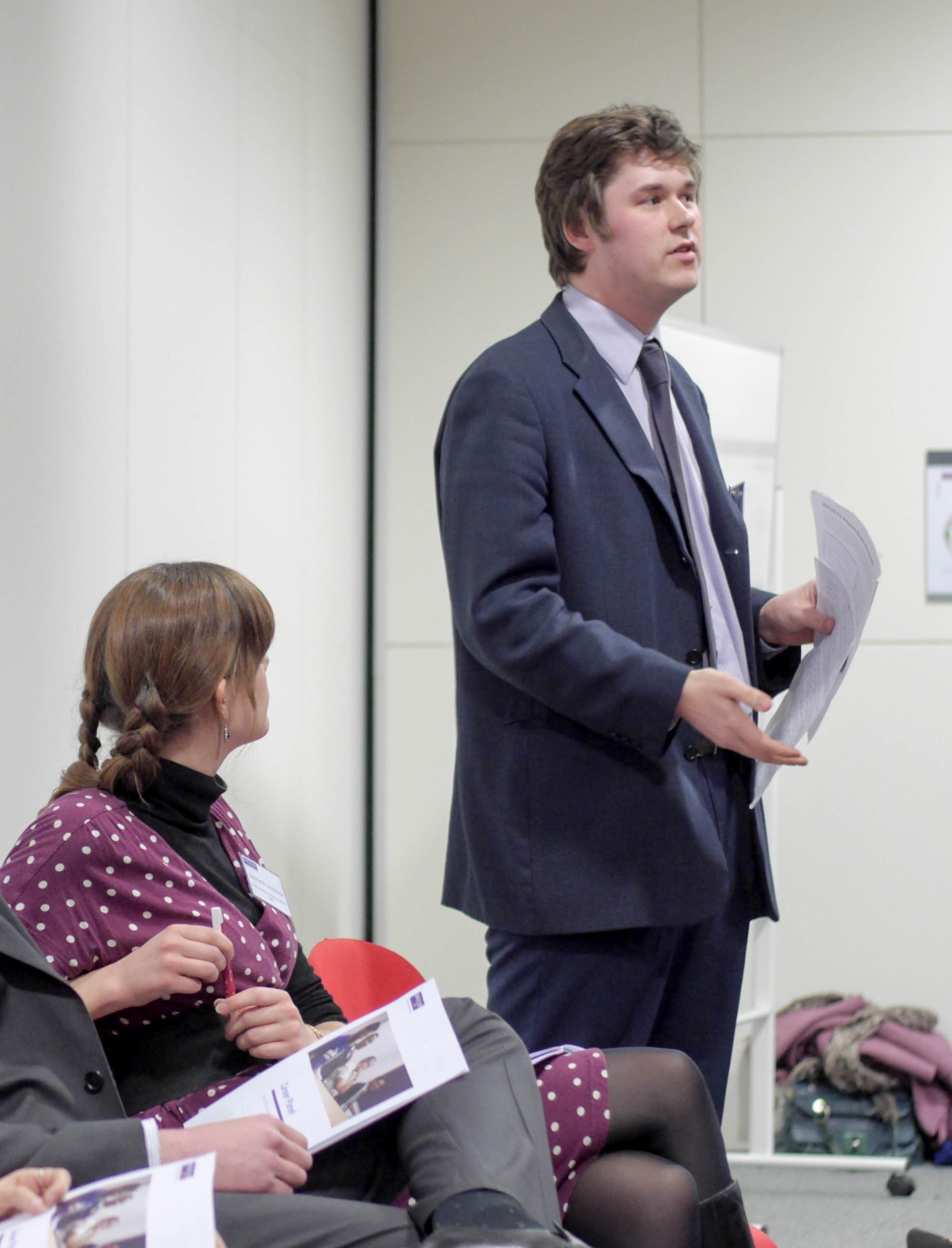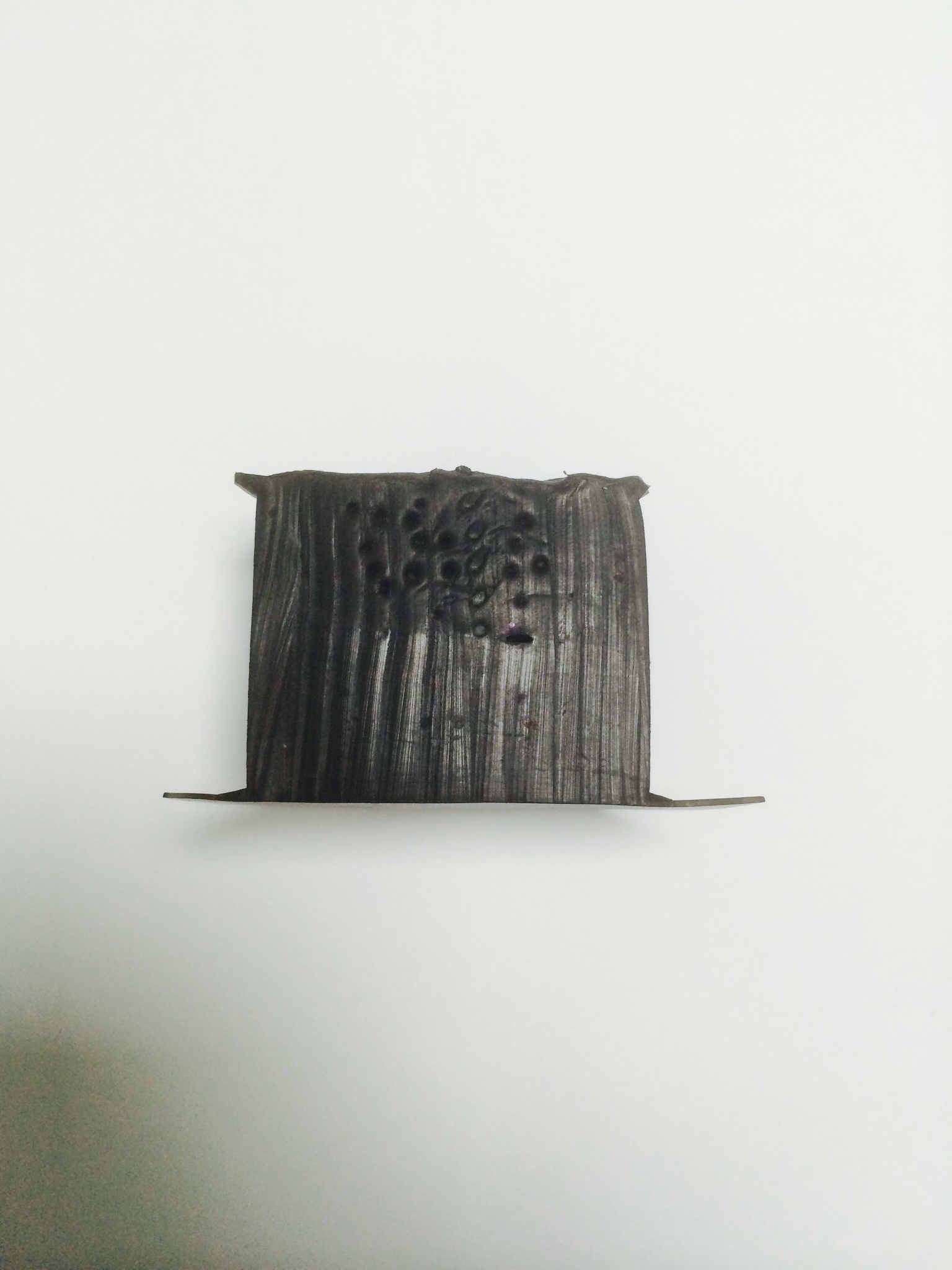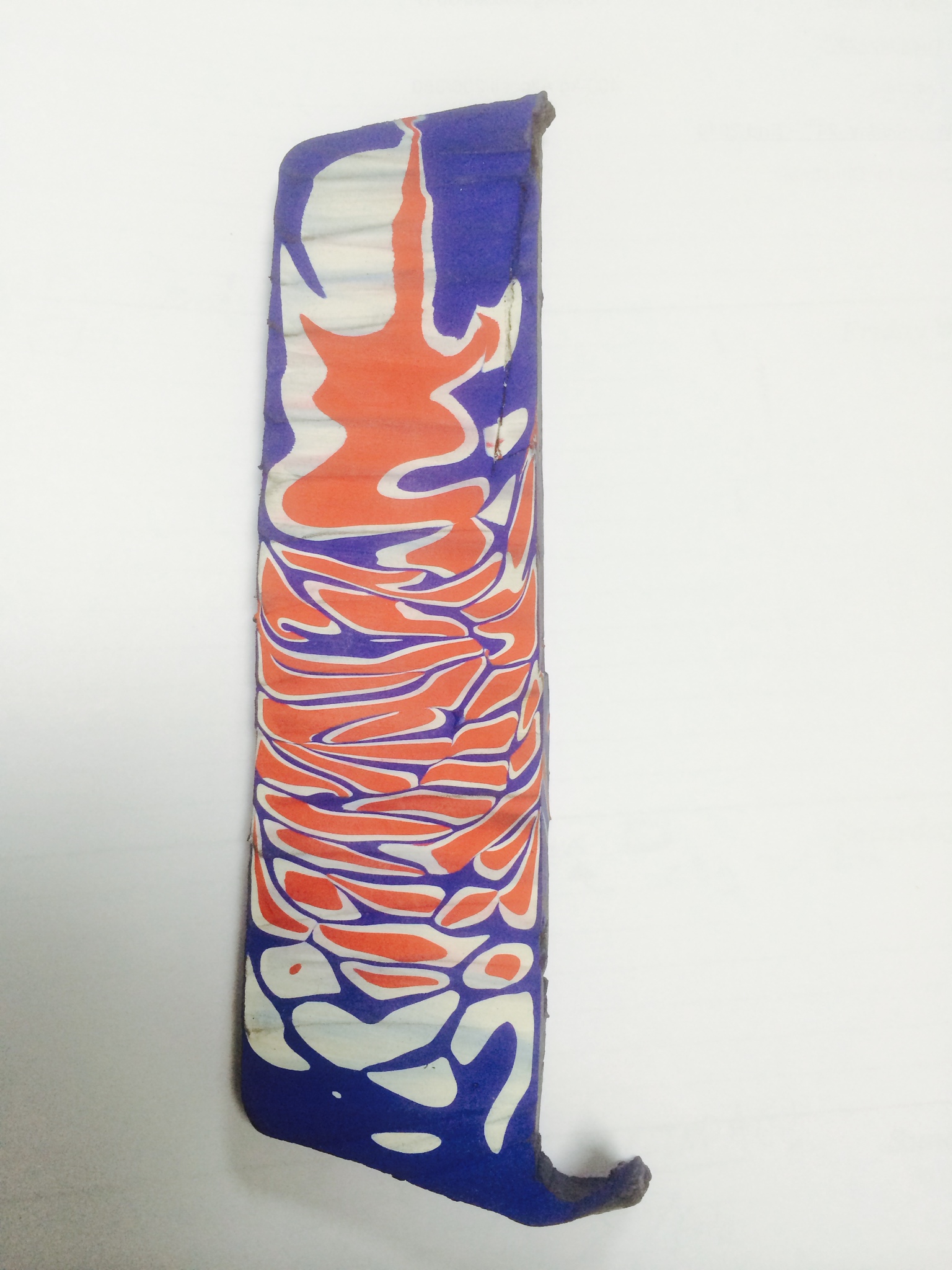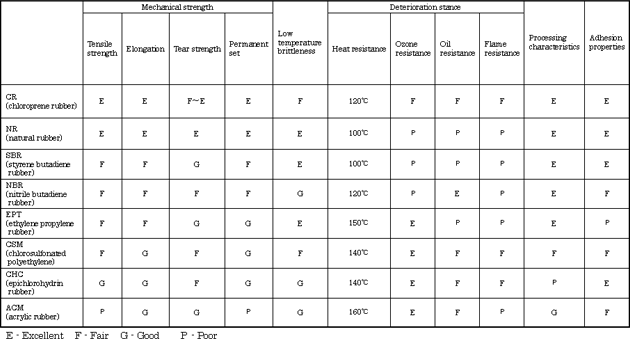We’re delighted to announce that our website has been translated into Italian and the new site is up and ready for use! Just select the Italian option in the languages section and all of our products, services and histories are available. Godere!
Straight to Print – DC 2418, The Post-Application Printable/Paintable Silicone Emulsion
One of the downsides of using Silicone oils or emulsions as a release agent is that the material you’ve released from the mould can’t be printed on or painted until the silicone oil has been cleaned off. The very nature of silicone oil, that it’s a non-poler, slippy polymer, means that any paint or ink wouldn’t penetrate the layer of oil, or would mix in with it. DC 2418 emulsion not only allows printing and painting of post-moulded products, thanks to Ethylated Silicone oil (and some other ingredients) but as it’s an emulsion, it’s as easy to use as traditional Silicone Emulsions.
If you’re interested in the specific properties of DC 2418, and it’s possible uses, please get in touch.
Sehr gute zeit in Nürnberg!
After a busy few weeks, thanks to the tremendous interest generated by our stand at DKT, We’re happy to say that our venture to the European Technical Rubber Convention was a great success!
Highlighting the use of Rubber crumb and Granule in rubber compounds, without the loss of properties, Our unique FKM crumbing facility and the extremely small particle size we can generate was received with great interest. We were able to show, first hand, how fine our FKM powder can be made, thus increasing the amount you can add into your compounds and saving you considerable costs without any deterioration of FKM properties.
We’d like to extend a big thank you to everyone who can to visit our stand and we hope to continue providing technical knowledge and top quality products to all our clientele.
J. Allcock and Sons at DKT/IRC Nuremberg and Launch of the Multi-Language Website
We are happy to announce that we will be hosting a stand at the Deutsche Kautschuk-Tagung / IRC International Rubber Conference at the NuernbergMesse GmbH exhibition centre. We will be exhibiting Rubber Reclaim, Rubber Crumb and FKM Crumb, which promises to revolutionize the Fluoroelastomer Industry. With more and more compounders and moulders showing an interest and using our fine grades of FKM crumb, we would be happy to chat about the benefits of our product. Andrew Rushton, Managing Director of J. Allcock and Sons, and I will be manning the stand and hope to see you there to answer any questions our queries you may have.
In preparation for the conference, we have also had our website translated into French, German and Spanish. We hope this will make finding the correct product and information easier for our clients on the continent. If you find any grammatical or spelling errors on any page, please contact me and I will happily incorporate your suggestions to continually improve your experience of our website.
No Snake Silicone Oil Salesman – Allcocks Out and About in Manchester
Over the past few months, the Sales team at J.Allcock and Sons have been attending events in Manchester.
Firstly, Myself and our MD, Andrew Rushton, attended a Vistage Open day. With a lecture given by one of the masters of sales, Lars Tewes, I certainly learnt a lot about how not only are we here to help solve issues our clients may be facing, but we are also here to help spot problems or issues that may not be obvious to the client and may arise in the future. It was an extremely informative and fun day and I personally hope to put some of the lessons into practice.
Mr Rushton and Myself taking a well-earned coffee break!
I also appeared as a guest at a graduate careers event at the University of Manchester, giving advice to students on how to get into the world of work. It was good to try and help students who are in a position I was in not so many years ago to try and make the most of their time at University (maybe avoid some of the mistakes your author made!)
Your author speaking at the University of Manchester Graduate careers event.
We might be often out of the office meeting clients, but it’s also good to try and give back to the local community and devote time to personal development. By attending lectures and speeches, we hope to be able to deliver a more streamlined and dedicated service to our clientèle, react to sudden changes in a situation more constructively and continue to provide the excellence and personal focus J. Allcock and Sons is known for.
Mastering the Future of Siloxanes – Silicone Oil Masterbatches
Polydimethylsiloxane (or Silicone Oil) has been a leading mould release agent since the 1950’s. Its inert chemical nature, extreme heat resistance and total lack of harmful contents have made it the obvious choice for many. However, as plastics rose to predominance in the moulded goods sector, the use of silicone oils began to decline. Difficulty of printing on treated surfaces and the occasional slip-inducing spillage put some off using Silicone oils in favour of other mould release agents. Though the issue of printing can be solved using specialist emulsions, many manufacturers wanted to remove liquids from their production processes.
After a long development process, Dow Corning produced a method of binding Ultra-High Molecular Weight Siloxane Polymers (usually with a viscosity of millions of centistokes) into small pellets of plastic, resulting in Siloxane Master Batches (Siloxane MBs). These enabled in built Silicone Oil lubrication to be added in highly controlled doses into any plastic desired, with the use of specific solid carriers (PET, PP, polystyrene, etc). Doses as low as 1% added along with any other master batches being used (eg colour) to give the desired slip needed in a moulded product, with the added bonus of the longevity of lubrication granted by such long chain Siloxane polymers.
Siloxane MBs have the potential to be used in a huge variety of roles, in fact any that require the lubrication of plastic goods. They can be used at all stages of manufacture, be it during production, such as its use in the manufacture of plastic fibres, or to help end use such as aiding the fitting of plastic piping together.
We currently sell Dow Corning Siloxane Master Batches and are happy to help with any technical issues or trials you wish to persue. We also supply a specialist Silicone Emulsion that allows printing and painting on treated surfaces. If you have any questions or are interested in these products, please contact us through our website and we will be happy to assist.
Matt Darlington
How to ‘Cure’ Some Moulding Issues
Rubber is of very little use until it has gone through the process of vulcanisation, where heat gives the energy needed for the long isoprene polymers to cross link, usually with sulphur side chains. Vulcanisation, often referred to in the rubber trade as ‘Curing’, turns rubber into the solid, elastic material that makes it so suited for the thousands of applications it is used for. As cured rubber is much stiffer than its pre-cured form, it has to be cured into the final form it is required to take, be it an O-ring, tubing or a coating on a fabric. Therefore, most rubber products are cured in the mould, which can be a classic mould press (with 2 heated plates pressing down on an amount of rubber to form the item with a small amount of flash) or injection moulding (where the mould is static and heated and the material is injected into it at pressure.
I’d like to take you through a couple of examples of experimentation made by our rubber consultant Norman Challinor that show how curing in the mould might not be as simple as you’d think.
Above is a photo of a test moulding using a piece of steel pipe as a mould (rubber piece is cylindrical around the rear) and 2 hot plates to cure from the top and bottom (as shown here). In this test a piece of wood was placed between the top hot plate and the rubber sample (as shown in picture) while the bottom hot plate was allowed to make full contact with the piece. After a set amount of time the hot plates were disengaged and the piece allowed to cool.
What can be seen is that the thermal insulation provided by the piece of wood prevented the top half of the sample from curing, which can be seen in the noticeable deformations made using a pen (while the cured lower half sprang back in place. The Steel pipe allowed the heat to conduct though the exterior (behind the sample in this image) but the wood retarded curing from the top of the piece due to restricting heat transfer. This shows the importance of the correct cure time for the thickness of a moulded object and for a manufacturer to think about where the heat sources are in their mould to ensure a complete cure of the product.
This second image shows an experiment to test a belief held by many in the rubber industry about Transfer Moulding.
Transfer moulding is like injection moulding, in that the rubber is ‘injected’ under the pressure of a hydraulic cylinder, but it is injected through several holes in the top plate of a heated mould (once the mould is closed) until the mould is filled.
It was believed that through the process of injection, the rubber compound would mix and form a homogenous piece of rubber. To test this, three separate sheets of rubber were placed in the hydraulic cylinder; in this case blue first, then white and finally red. As you can see, contrary to common belief, the rubber sheets failed to fully blend in the mould, leading to the patterning seen above. These separate layers may become weak points in the finished product, even though the product has cured evenly. It suggests extra care is needed at the moulding blank preparation stage, such as preheating to ensure an even heat throughout the rubber (which is known as the blank)Â before injection.
These two fun examples are great ways to show how it is important to test rubber technology theory to ensure success on the factory floor, even if what you are testing would seem like common sense. Such as the use of 2/3mm thick laboratory test pieces will not necessarily translate the correct cure times for the full sized product, due to the poor heat transfer of rubber itself.
Many thanks to Norman Challinor for the 2 sample pieces, and the stories and lessons behind them.
If you are having moulding issues, or think one of our products could help give you a more even, cheaper cured product please get in touch via our website www.allcocks.co.uk, phone 0161 223 7181 or visit our stand at DKT2015/IRC 2015 12-352 Nuremburg 29th June to 2nd July!
Matt Darlington
Review of the Year – 2014 @ J Allcock and Sons
2014 at J Allcock and Sons Ltd.
It’s been another great year here at J Allcock and Sons. Rubber crumb and granule sales are up on last year, with an additional granulator to be installed next year and upgrading the line at our Wellington Rubber branch. FKM crumb production has increased 20% from last year and looks set to continue to increase into the New Year. In addition to our stringent particle size laboratory testing, we have recently instigated a quick pass/fail test during production, at short regular intervals. This will maintain the quality of our material that we’re known for.
Silicone sales are also up from last year, especially our Food Grade Silicone Emulsions. Of the small number of complaints to the company, most of them were due to poor housekeeping by the end user leading to silicone splitting (for tips on how to stop this, have a look at our previous blog post ‘A Splitting Headache’).
With this sustained increase in sales, we’re also looking into expanding our storage facilities, expanding our storage capacity by tens of tonnes.
Finally, we’ve welcomed 2 new members to the company. I joined just before Luke departed for a year in Australia, and Stephen has joined to learn the ropes controlling stock and purchases.
Looking to the New Year, we expect to continue our personalised service for our clients and welcome new clients from both the UK and the continent, thanks to our upcoming foreign language translations of our website. We’ll also be at DKT (Deutsche Kautschuk-Tagung) 2015 in Nuremburg in the summer to show our crumb and rubber reclaim to the European Rubber Community.
We’d like to say a big thank you to all our clients for continuing to choose us as there supplier, and the staff at J Allcock and Sons for a great year. We wish you all a merry Christmas and a happy 2015!
Matt Darlington
Types of Rubber – Pick-and-Mix
There are a near infinite variety of rubber compounds, with variety in mineral fillers, accelerators, curatives (and the type of cure), plasticizers, colour and of course the base rubber polymer. Rubber polymers come in two basic groups, natural and synthetic.
Natural rubber (NR), popularly known as Latex (when in the liquid form) or Natural Gum Rubber (once dried) is obtained mainly from the Hevea Brasiliensis Tree in South East Asia. Natural rubber consists of Cis-1,4-polyisoprene which can have masses as large as 1 million Daltons. Such large atomic structures, with plenty of double bonds, allows sulphur and heat to bond two double bonds of adjacent isoprene polymers with 3 or 4 sulphur atoms. This process is called vulcanisation, which was accidentally discovered by Charles Goodyear in 1839 using. Vulcanisation creates a network of bonds that changes the physical form of the Gum Rubber to the harder, elastic material that revolutionised the late 19th century world.
Initially sought by the Germans in the 1st World War, Synthetic Rubber was developed due to the Royal Navy’s Blockade causing a shortage of Natural Rubber. The first attempt at Artificial Rubber, Methyl Rubber, was of poor quality. Later attempts such as the Soviet use of Giant Dandelions to produce latex in WW2 weren’t much more successful. It wasn’t until the US Synthetic Rubber Programme developed Styrene Butadiene early in WW2 that a viable alternative to natural rubber became available, and the doorway to synthetic rubber polymers was opened.
There are now many types of rubber polymer, each tailored to the desired needs of the client. Below is a good rough outline to the characteristics of each rubber polymer, for example Acrylonitrile Butadiene Rubber is often used in oil seals and o-rings due to its excellent oil resistance:
Taken from: http://www.denka.co.jp/eng/organic/product/img/detail_001123_07.gif
We at J. Allcock and Sons are able to granulate NBR, SBR, EPDM, FKM and FFKM on site to any desired crumb mesh size, as long as the rubber is free of any textiles or metals. Crumb can be used as a filler in compounds, reduce the chance of trapped air causing lakeing during moulding or dusted onto rubber sheets to help the separation after cooling. Crumb is a great way to reduce compound cost without increasing the specific gravity of the compound (keeping volume costs down).
If you are interested in disposing of some of your cured rubber compound with us please get in touch via our website or phone us on 0161 223 7181.
Allcocks at the IRC Rubber Convention 2014 – Manchester
As we blogged at the time, we attended and manned a stand at the IOM3’s Rubber Convention this year in Manchester. We enjoyed meeting many people from the rubber industry as well as those researching the next big developments for rubber.
Andy Rushton and our stand at the IRC Rubber Convention 2014
Over the two days of the convention (14th and 15th May) we gave out two copies of a history of Manchester in photographs. The first was won by Ms Karin Janet Stein Brito (see picture below) of the Polymer Technology Centre – SENAI in Brazil, whilst the second was won by Mr Bill Adam of Adam Polymer in the UK.
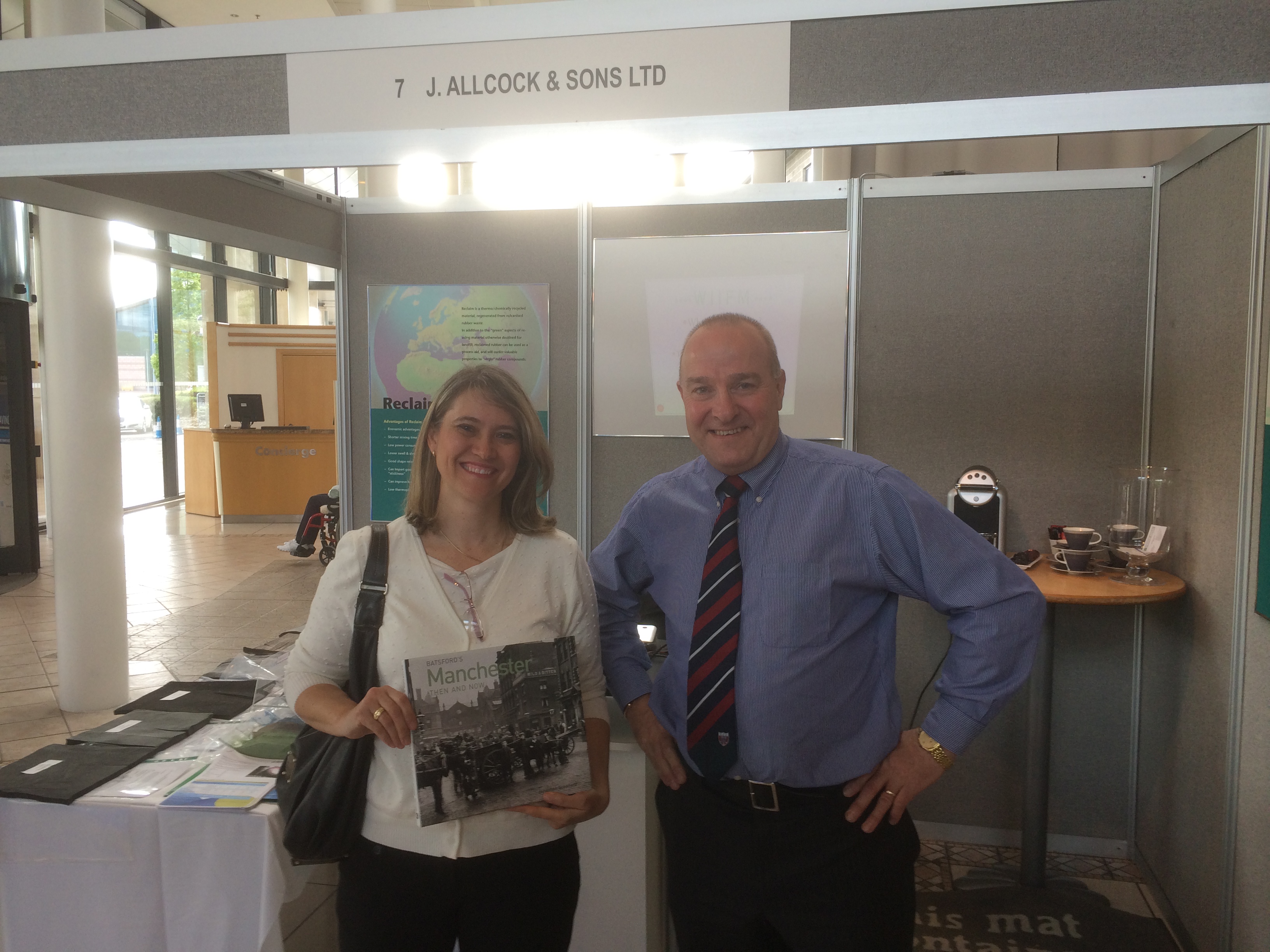
We look forward to the next conference and hope to spread the word of Rubber Reclaim and Rubber Crumb such as their benefits in formulation and myriad uses.



